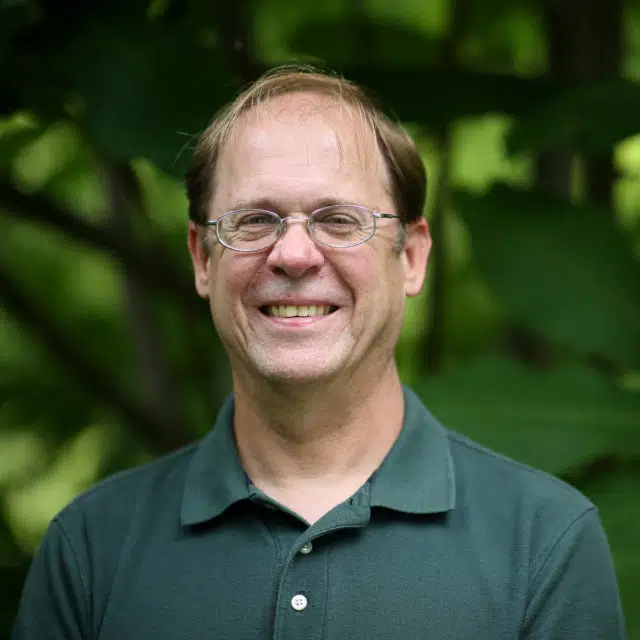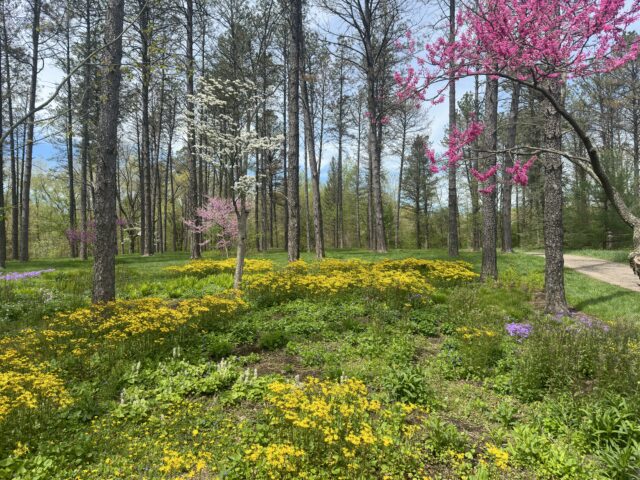
Each year on December 5th, the Food and Agriculture Organization of the United Nations celebrates World Soil Day. World Soil Day began in 2014 to focus attention on the importance of healthy soil and this year has adopted the slogan “Keep soil alive, Protect soil biodiversity.”
When we think of all the organisms on Earth, it’s soil that holds a substantial portion of this biodiversity. In just one teaspoon of clean, uncontaminated soil there can be up to 1 billion bacterial cells and close to 1 million different microbial species. Soils can harbor tens of thousands of species of fungi that can help plants acquire essential nutrients, decompose organic matter, and fight pathogens belowground. Antibiotics, such as streptomycins and tetracyclines, are produced by soil bacteria and fungi. Soil biota can be essential for bioremediation, a process where pollutants are degraded and ecosystems are cleaned. Soil bacteria and fungi, along with a number of invertebrates, decompose organic matter, such as rotting logs and fallen leaves; this decomposition may be key for sequestering carbon belowground and helping to mitigate the effects of climate change.
One important group of soil fungi are mycorrhizal fungi, which act as an extension of plant roots. These fungi live in association with plant roots in a mutualistic relationship where plants receive nutrients from soil from the fungi in exchange for fixed carbon from photosynthesis. Over 90% of land plants form relationships with mycorrhizal fungi, which benefit the plants in more ways than nutrient acquisition; they also help plants become less drought stressed and physically block pathogens. Plants like the onions, tomatoes, and beans in your garden all benefit from mycorrhizal associations. Because of all the important processes that are mediated by mycorrhizal fungi and other soil organisms, the healthiest soils are those that harbor a diversity of life! These diverse, healthy soils are the foundation for productive and sustainable agriculture. Farmers have known for centuries that healthy soils are imperative for the best crop yield. Scientists are beginning to understand that agricultural fields once decimated by pathogens can indeed be used for farming, as long as the soil contains a diverse make-up of bacteria and fungi to fight the pathogen. But, what exactly are the taxa that are found in healthy soils? This is where we have large gaps in our knowledge. We still know so little about the biodiversity belowground. There are estimates that only 1% of soil organisms across the globe have been described. Soil ecologists are working hard to uncover this unknown diversity and understand how these organisms contribute to the overall health of ecosystems.
In the soil ecology lab at Holden, we too are working toward understanding more about soil biodiversity. Some of our research questions aim to identify what erodes soil diversity and investigate ways to restore eroded diversity. It turns out that past land use history can have a large effect on soil biota and that even 70+ years of forest recovery may not be enough time to bring back a healthy soil biota. In 2014, the Conservation and Research departments at Holden began surveying forest sites at the arboretum for their integrity. Based on an aerial photograph from 1937, it became clear that the low-quality forest sites in Stebbins Gulch were under agriculture at that time and that the present-day forest had regrown from abandoned fields. Compared to the high-quality, old growth forest sites in the interior of Stebbins Gulch, the low-quality sites had small trees, few wildflowers, increased invasive plants, and no topsoil.
We wondered about the biota belowground and, so, in 2015 we began identifying the fungi in the soil of both high-quality and low-quality sites. What we found were higher numbers of pathogenic fungi in sites that were under agriculture in 1937 compared to the old growth forests. We also found that the forests disturbed by agriculture had less mycorrhizal fungi. We now are wondering how the loss of wildflowers and the presence of invasive plants in disturbed forests relates to this eroded diversity of fungi. Ongoing research is investigating how soil amendments can help restore a low-quality forest to a high-quality forest. We have been doing simple plantings of wildflowers in the forests. When we make the plantings in the low-quality sites, we add either commercially available mycorrhizal fungi or a small amount of soil from the old growth region of Stebbins Gulch as a way to improve the soil health. The verdict is still out on what is the best soil amendment, but at least preliminarily, we think that soil amendments that restore fungal diversity belowground are important for restoring plant diversity aboveground.
There are a number of other examples in the scientific literature of how soil organisms prove important for ecosystem health and crop yield. As we celebrate World Soil Day tomorrow, we know we will take a moment to appreciate the unseen, but important biodiversity belowground that helps keep our environment clean, healthy, and thriving! We hope you will too!
Want to learn more about soil?
- Stay tuned to holdenfg.org – we will go underground with our Vice President of Science and Conservation Dr. David Burke in the coming weeks to learn more about the importance of healthy soil.
- Watch a cool new documentary on Netflix called Kiss the Ground based on a book of the same name by Josh Tickell

David J. Burke, PhD
Vice President for Science and Conservation
Dr. David Burke is the Vice President for Science and Conservation at Holden Forests & Gardens, and the principal investigator of Holden’s soil ecology lab. Dr. Burke is a leader in the study of beech leaf disease, a new forest pathogen sweeping across North America from its epicenter in northeastern Ohio. His work has helped identify the means of the disease’s spread, and his continuing work aims to reveal the mechanisms of the disease as well as a path to breeding trees resistant to the trees. Although he’s recently served as a forest pathologist out of need, Dr. Burke is a soil ecologist at heart, primarily interested in the interactions between plants and the microorganisms that live in the soil like the mycorrhizal fungi that form mutually beneficial relationships with plants. These mycorrhizal fungi may be key to the health of many natural communities, so a better understanding of their diversity, how they interact with plants and other soil microbes, and how this in turn affects ecosystem health is necessary for the future sound management of natural systems.











